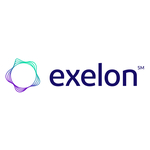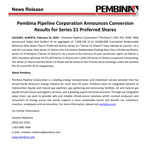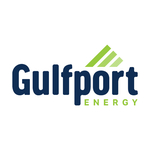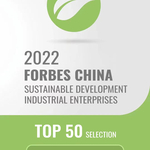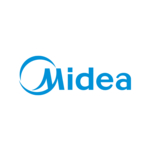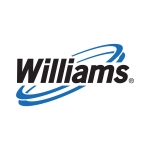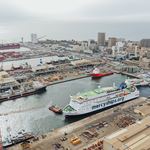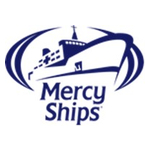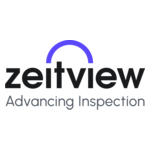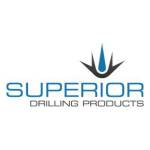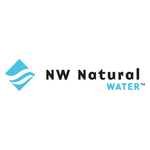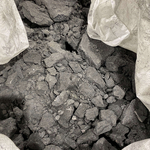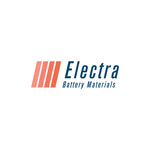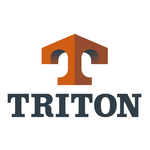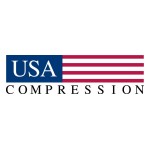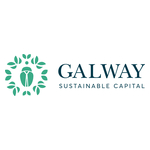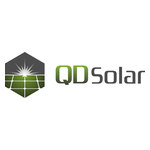ATHENS, Greece--(BUSINESS WIRE)--Danaos Corporation (“Danaos”) (NYSE: DAC), one of the world’s largest independent owners of containerships, today reported unaudited results for the fourth quarter and the year ended December 31, 2022.
Highlights for the Fourth Quarter and Year Ended December 31, 2022:
-
Adjusted net income1 of $141.6 million, or $6.99 per share, for the three months ended December 31, 2022 compared to $125.8 million, or $6.10 per share, for the three months ended December 31, 2021, an increase of 12.6%. Adjusted net income1 of $711.0 million, or $34.68 per share, for the year ended December 31, 2022 compared to $362.3 million, or $17.60 per share, for the year ended December 31, 2021, an increase of 96.2%.
-
Cash and cash equivalents amounted to $267.7 million as of December 31, 2022.
-
Total liquidity, including undrawn available commitments under our Revolving Credit Facility amounted to $650.2 million as of December 31, 2022.
-
Operating revenues of $252.5 million for the three months ended December 31, 2022 compared to $215.0 million for the three months ended December 31, 2021, an increase of 17.4%. Operating revenues of $993.3 million for the year ended December 31, 2022 compared to $689.5 million for the year ended December 31, 2021, an increase of 44.1%.
-
Adjusted EBITDA1 of $176.4 million for the three months ended December 31, 2022 compared to $159.2 million for the three months ended December 31, 2021, an increase of 10.8%. Adjusted EBITDA1 of $851.2 million for the year ended December 31, 2022 compared to $508.8 million for the year ended December 31, 2021, an increase of 67.3%.
-
Total contracted cash operating revenues were $2.1 billion as of December 31, 2022 and remaining average contracted charter duration was 3.4 years, weighted by aggregate contracted charter hire.
-
Contracted operating days charter coverage currently stands at 92.6% for 2023 and 63.3% for 2024.
-
During 2022, we made early prepayment of $909.1 million of bank debt, lease and bond indebtedness and realized a $4.4 million gain associated with this debt extinguishment. Additionally, during 2022 we drew down $185.25 million from new credit facilities while we also entered into a $382.5 million Revolving Credit Facility that is available and undrawn as of December 31, 2022.
-
As a result of the above, as of December 31, 2022, Net Debt2 was $243.3 million, Net Debt / LTM Adjusted EBITDA was 0.29x, while 42 of our vessels are debt-free currently.
-
Danaos has declared a dividend of $0.75 per share of common stock for the fourth quarter of 2022, which is payable on March 14, 2023 to stockholders of record as of February 28, 2023.
|
|
|
|
|
|
|
|
Three Months and Year Ended December 31, 2022
|
Financial Summary – Unaudited
|
(Expressed in thousands of United States dollars, except per share amounts)
|
|
Three months ended
|
|
Three months ended
|
|
Year ended
|
|
Year ended
|
December 31,
|
December 31,
|
December 31,
|
December 31,
|
|
2022
|
|
2021
|
|
2022
|
|
2021
|
Operating revenues
|
$252,483
|
|
$215,038
|
|
$993,344
|
|
$689,505
|
Net income
|
$152,721
|
|
$165,997
|
|
$559,210
|
|
$1,052,841
|
Adjusted net income1
|
$141,651
|
|
$125,839
|
|
$710,980
|
|
$362,257
|
Earnings per share, diluted
|
$7.54
|
|
$8.05
|
|
$27.28
|
|
$51.15
|
Adjusted earnings per share, diluted1
|
$6.99
|
|
$6.10
|
|
$34.68
|
|
$17.60
|
Diluted weighted average number of shares (in thousands)
|
20,268
|
|
20,623
|
|
20,501
|
|
20,584
|
Adjusted EBITDA1
|
$176,422
|
|
$159,164
|
|
$851,160
|
|
$508,803
|
1Adjusted net income, adjusted earnings per share and adjusted EBITDA are non-GAAP measures. Refer to the reconciliation of net income to adjusted net income and net income to adjusted EBITDA provided below.
|
2Net Debt is defined as total debt gross of deferred finance costs less cash and cash equivalents.
|
Danaos’ CEO Dr. John Coustas commented:
“This past year marked the peak of the container market, and the exceptionally strong market conditions we saw over the last two years are behind us. The decline in box rates to pre-pandemic levels across all sailing routes, foreshadows difficult times ahead. The liner companies are projecting 2023 earnings materially lower when compared with 2022, and we are still waiting to see the full effect of the looming recession. Charter rates have fallen significantly but remain higher than pre-pandemic levels. However, charter durations rarely exceed 12 months.
Fortunately, we are insulated from current market conditions as 93% of our available days are already contracted for 2023, providing us with excellent visibility for the year ahead. Given our limited near-term downside risk and our minimal debt obligations, we have ample firepower to opportunistically take advantage of the forthcoming downturn.
We are closely following the developments in the liner space, and the dismantling of the 2M alliance will definitely be positive for the non-operating owners as there will be less efficiency in the networks. Additionally, the effects of decarbonization have not been factored in the forecasts for effective fleet supply reduction through the anticipated reduction in service speeds. Liner companies are just now beginning to study the Carbon Intensity Indicator, or CII, of their owned and chartered vessels, and due to widespread criticism of the current structure of the index and the expectation that it will most likely be modified, no concrete action is being taken to redesign networks with a view to conform to the index.
Danaos is actively investigating various decarbonization strategies for our existing fleet and is actively involved in the optimization of the six environmentally friendly newbuildings that are being delivered to us next year. We remain committed to our strategy of accretive growth and delivering superior results for our shareholders.”
Three months ended December 31, 2022 compared to the three months ended December 31, 2021
During the three months ended December 31, 2022, Danaos had an average of 69.8 containerships compared to 70.9 containerships during the three months ended December 31, 2021. Our fleet utilization for the three months ended December 31, 2022 was 94.8% compared to 97.4% for the three months ended December 31, 2021. The decrease in utilization was mainly due to the increased days of scheduled dry-docking of our vessels.
Our adjusted net income amounted to $141.6 million, or $6.99 per share, for the three months ended December 31, 2022 compared to $125.8 million, or $6.10 per share, for the three months ended December 31, 2021. We have adjusted our net income in the three months ended December 31, 2022 for gain on sale of vessels of $37.2 million, loss on debt extinguishment of $18.6 million, stock based compensation of $5.4 million and a non-cash fees amortization of $2.1 million. Please refer to the Adjusted Net Income reconciliation table, which appears later in this earnings release.
The $15.8 million increase in adjusted net income for the three months ended December 31, 2022 compared to the three months ended December 31, 2021 is attributable mainly to a $37.5 million increase in operating revenues and a $5.5 million decrease in net finance expenses, which were partially offset by a $16.2 million decrease in dividends from ZIM (net of withholding taxes), a $7.8 million increase in prior service cost and a $3.2 million increase in total operating expenses.
On a non-adjusted basis, our net income amounted to $152.7 million, or $7.54 earnings per diluted share, for the three months ended December 31, 2022 compared to net income of $166.0 million, or $8.05 earnings per diluted share, for the three months ended December 31, 2021. Our net income for the three months ended December 31, 2022 includes a gain on sale of vessels of $37.2 million and a loss on debt extinguishment of $18.6 million.
Operating Revenues
Operating revenues increased by 17.4%, or $37.5 million, to $252.5 million in the three months ended December 31, 2022 from $215.0 million in the three months ended December 31, 2021.
Operating revenues for the three months ended December 31, 2022 reflect:
-
a $72.9 million increase in revenues in the three months ended December 31, 2022 compared to the three months ended December 31, 2021 mainly as a result of higher charter rates;
-
a $1.6 million decrease in revenues in the three months ended December 31, 2022 compared to the three months ended December 31, 2021 due to vessel disposals
-
a $7.9 million decrease in revenues in the three months ended December 31, 2022 compared to the three months ended December 31, 2021 due to amortization of assumed time charters; and
-
a $25.9 million decrease in revenue in the three months ended December 31, 2022 compared to the three months ended December 31, 2021 due to lower non-cash revenue recognition in accordance with US GAAP.
Vessel Operating Expenses
Vessel operating expenses increased by $2.8 million to $40.0 million in the three months ended December 31, 2022 from $37.2 million in the three months ended December 31, 2021, primarily as a result of the increase in the average daily operating cost for vessels on time charter to $6,417 per vessel per day for the three months ended December 31, 2022 compared to $5,861 per vessel per day for the three months ended December 31, 2021, which was partially offset by a slight decrease in the average number of vessels in our fleet. The average daily operating cost increased mainly due to the COVID-19 and Ukraine war related increase in crew remuneration, increased insurance premiums and repairs in the three months ended December 31, 2022 compared to the three months ended December 31, 2021. Management believes that our daily operating costs remain among the most competitive in the industry.
Depreciation & Amortization
Depreciation & Amortization includes Depreciation and Amortization of Deferred Dry-docking and Special Survey Costs.
Depreciation
Depreciation expense decreased by 2.9%, or $1.0 million, to $33.0 million in the three months ended December 31, 2022 from $34.0 million in the three months ended December 31, 2021 mainly due to a sale of our two vessels Leo C and Catherine C in November 2022.
Amortization of Deferred Dry-docking and Special Survey Costs
Amortization of deferred dry-docking and special survey costs increased by $0.6 million to $3.2 million in the three months ended December 31, 2022 from $2.6 million in the three months ended December 31, 2021.
General and Administrative Expenses
General and administrative expenses decreased by $3.7 million, to $14.9 million in the three months ended December 31, 2022 from $18.6 million in the three months ended December 31, 2021 mainly due to a $3.6 million decrease in stock-based compensation.
Other Operating Expenses
Other Operating Expenses include Voyage Expenses.
Voyage Expenses
Voyage expenses increased by $1.1 million to $8.2 million in the three months ended December 31, 2022 from $7.1 million in the three months ended December 31, 2021 primarily as a result of the increase in commissions due to the increase in revenue per vessel.
Gain on sale of vessels
In November 2022, we completed the sale of the Catherine C and Leo C for net proceeds of $128.0 million resulting in a gain of $37.2 million.
Interest Expense and Interest Income
Interest expense decreased by 26.1%, or $4.6 million, to $13.0 million in the three months ended December 31, 2022 from $17.6 million in the three months ended December 31, 2021. The decrease in interest expense is a combined result of:
-
a $1.7 million decrease in interest expense due to a decrease in our average indebtedness by $589.4 million between the two periods (average indebtedness of $807.9 million in the three months ended December 31, 2022 compared to average indebtedness of $1,397.3 million in the three months ended December 31, 2021), which was partially offset by an increase in our debt service cost by 2.38 percentage points, mainly as a result of increase in the reference rates for our floating rate debt;
-
a $1.4 million decrease in the amortization of deferred finance costs and debt discount;
-
a $3.0 million decrease in interest expense due to capitalized interest on our vessels under construction in the three months ended December 31, 2022 compared to none in the three months ended December 31, 2021; and
-
a $1.5 million reduction in the recognition through our income statement of accumulated accrued interest that had been accrued in 2018 in relation to two of our credit facilities that were refinanced on April 12, 2021 and subsequently fully repaid on May 15, 2022, at which point the remaining accumulated accrued interest of $26.9 million was recognized in gain on debt extinguishment.
As of December 31, 2022, our outstanding debt, gross of deferred finance costs, was $438.0 million, which includes $262.8 million aggregate principal amount of our Senior Notes, and our leaseback obligation was $72.9 million. These balances compare to debt of $1,142.0 million and a leaseback obligation of $226.5 million, gross of deferred finance costs, as of December 31, 2021.
Interest income increased by $2.6 million to $3.2 million in the three months ended December 31, 2022 compared to $0.6 million in the three months ended December 31, 2021 mainly as a result of increased interest income earned on time deposits in the three months ended December 31, 2022.
Gain on investments
The gain on investments of $70.2 million in the three months ended December 31, 2021 consisted of the change in fair value of our shareholding interest in ZIM of $52.2 million and dividends recognized on ZIM ordinary shares of $18.0 million. This compares to no gain in the three months ended December 31, 2022 due to the sale of all our remaining ZIM ordinary shares in September 2022.
Loss on debt extinguishment
The loss on debt extinguishment of $18.6 million in the three months ended December 31, 2022 related to our early extinguishment of debt compared to none in the three months ended December 31, 2021.
Other finance expenses
Other finance expenses increased by $0.3 million to $0.5 million in the three months ended December 31, 2022 compared to $0.2 million in the three months ended December 31, 2021.
Loss on derivatives
Amortization of deferred realized losses on interest rate swaps remained stable at $0.9 million in each of the three months ended December 31, 2022 and December 31, 2021.
Other income/(expenses), net
Other expenses, net were $7.9 million in the three months ended December 31, 2022 compared to other income, net of $0.1 million in the three months ended December 31, 2021. The decrease was mainly due to reclassification of prior service cost of a defined benefit obligation of $7.8 million in the three months ended December 31, 2022.
Income taxes
Income taxes were nil in the three months ended December 31, 2022 compared to $1.8 million taxes withheld on dividend income earned on ZIM ordinary shares in the three months ended December 31, 2021.
Adjusted EBITDA
Adjusted EBITDA increased by 10.8%, or $17.2 million, to $176.4 million in the three months ended December 31, 2022 from $159.2 million in the three months ended December 31, 2021. As outlined above, the increase is mainly attributable to a $45.3 million increase in operating revenues (net of $7.9 million decrease in amortization of assumed time charters), which were partially offset by a $11.9 million increase in total operating expenses and a $16.2 million decrease in dividends from ZIM (net of withholding taxes). Adjusted EBITDA for the three months ended December 31, 2022 is adjusted for a $37.2 million gain on sale of vessels, a $18.6 million loss on debt extinguishment and stock-based compensation of $5.6 million. Tables reconciling Adjusted EBITDA to Net Income can be found at the end of this earnings release.
Year ended December 31, 2022 compared to the year ended December 31, 2021
During the year ended December 31, 2022, Danaos had an average of 70.7 containerships compared to 64.2 containerships during the year ended December 31, 2021. Our fleet utilization for the year ended December 31, 2022 was 97.3% compared to 98.2% for the year ended December 31, 2021. The decrease in utilization was mainly due to the increased days of scheduled dry-docking of our vessels.
Our adjusted net income amounted to $711.0 million, or $34.68 per share, for the year ended December 31, 2022 compared to $362.3 million, or $17.60 per share, for the year ended December 31, 2021. We have adjusted our net income in the year ended December 31, 2022 for the change in fair value of our investment in ZIM of $176.4 million, gain on sale of vessels of $37.2 million, gain on debt extinguishment of $4.4 million, a non-cash fees amortization of $11.5 million and stock based compensation of $5.4 million. Please refer to the Adjusted Net Income reconciliation table, which appears later in this earnings release.
The $348.7 million increase in adjusted net income for the year ended December 31, 2022 compared to the year ended December 31, 2021 is attributable mainly to a $303.8 million increase in operating revenues and a $118.7 million increase in dividends from ZIM (net of withholding taxes), which were partially offset by a $52.5 million increase in total operating expenses, a $5.6 million increase in net finance expenses, a $7.8 million increase in prior service costs, a $4.0 million decrease in our equity income from our investment in Gemini Shipholdings Corporation following our acquisition and full consolidation of Gemini since July 1, 2021 and a partial collection of common benefit claim of $3.9 million from Hanjin Shipping in the year ended December 31, 2021.
On a non-adjusted basis, our net income amounted to $559.2 million, or $27.28 earnings per diluted share, for the year ended December 31, 2022 compared to net income of $1,052.8 million, or $51.15 earnings per diluted share, for the year ended December 31, 2021. Our net income for the year ended December 31, 2022 includes a gain on sale of vessels of $37.2 million, a total loss on our investment in ZIM of $29.2 million (net of withholding taxes on dividend) and a gain on debt extinguishment of $4.4 million.
Operating Revenues
Operating revenues increased by 44.1%, or $303.8 million, to $993.3 million in the year ended December 31, 2022 from $689.5 million in the year ended December 31, 2021.
Operating revenues for the year ended December 31, 2022 reflect:
-
a $260.6 million increase in revenues in the year ended December 31, 2022 compared to the year ended December 31, 2021 mainly as a result of higher charter rates;
-
a $55.8 million increase in revenues in the year ended December 31, 2022 compared to the year ended December 31, 2021 due to the incremental revenue generated by newly acquired vessels;
-
a $29.0 million increase in revenues in the year ended December 31, 2022 compared to the year ended December 31, 2021 due to amortization of assumed time charters;
-
a $1.6 million decrease in revenues in the year ended December 31, 2022 compared to the year ended December 31, 2021 due to vessel disposals; and
-
a $40.0 million decrease in revenue in the year ended December 31, 2022 compared to the year ended December 31, 2021 due to lower non-cash revenue recognition in accordance with US GAAP.
Vessel Operating Expenses
Vessel operating expenses increased by $23.1 million to $159.0 million in the year ended December 31, 2022 from $135.9 million in the year ended December 31, 2021, primarily as a result of the increase in the average number of vessels in our fleet and an increase in the average daily operating cost for vessels on time charter to $6,339 per vessel per day for the year ended December 31, 2022 compared to $5,986 per vessel per day for the year ended December 31, 2021. The average daily operating cost increased mainly due to the COVID-19 and Ukraine war related increase in crew remuneration and increased insurance premiums in the year ended December 31, 2022 compared to the year ended December 31, 2021. Management believes that our daily operating costs remain among the most competitive in the industry.
Depreciation & Amortization
Depreciation & Amortization includes Depreciation and Amortization of Deferred Dry-docking and Special Survey Costs.
Depreciation
Depreciation expense increased by 14.9%, or $17.4 million, to $134.3 million in the year ended December 31, 2022 from $116.9 million in the year ended December 31, 2021 due to recent acquisitions of 11 vessels.
Amortization of Deferred Dry-docking and Special Survey Costs
Amortization of deferred dry-docking and special survey costs increased by $2.0 million to $12.2 million in the year ended December 31, 2022 from $10.2 million in the year ended December 31, 2021.
General and Administrative Expenses
General and administrative expenses decreased by $7.4 million to $36.6 million in the year ended December 31, 2022, from $44.0 million in the year ended December 31, 2021. The decrease was mainly attributable to a $9.3 million decrease in stock-based compensation, which was partially offset by a $2.0 million increase in management fees (due to increased average size of our fleet) in the year ended December 31, 2022 compared to the year ended December 31, 2021.
Other Operating Expenses
Other Operating Expenses include Voyage Expenses.
Voyage Expenses
Voyage expenses increased by $10.8 million to $35.1 million in the year ended December 31, 2022 from $24.3 million in the year ended December 31, 2021 primarily as a result of the increase in commissions due to the increase in revenue per vessel and the increase in the average number of vessels in our fleet.
Gain on sale of vessels
In November 2022, we completed the sale of the Catherine C and Leo C for net proceeds of $128.0 million resulting in a gain of $37.2 million.
Interest Expense and Interest Income
Interest expense decreased by 10.0%, or $6.9 million, to $62.1 million in the year ended December 31, 2022 from $69.0 million in the year ended December 31, 2021. The decrease in interest expense is a combined result of:
-
a $7.6 million decrease in interest expense due to a decrease in our average indebtedness by $407.4 million between the two periods (average indebtedness of $1,070.7 million in the year ended December 31, 2022 compared to average indebtedness of $1,478.1 million in the year ended December 31, 2021), which was partially offset by an increase in our debt service cost by 0.96 percentage points, mainly as a result of increase in the reference rates on our floating rate debt;
-
a $4.4 million decrease in the amortization of deferred finance costs and debt discount;
-
a $5.0 million decrease in interest expense due to capitalized interest on our vessels under construction in the year ended December 31, 2022 compared to none in the year ended December 31, 2021; and
-
a $10.1 million reduction in the recognition through our income statement of accumulated accrued interest that had been accrued in 2018 in relation to two of our credit facilities that were refinanced on April 12, 2021 and subsequently fully repaid on May 15, 2022, at which point the remaining accumulated accrued interest of $26.9 million was recognized in gain on debt extinguishment.
During the year ended December 31, 2022, we reduced debt, bond and lease indebtedness by $1,042.8 million mainly as a result of $909.1 million early debt and lease repayments and recognized a $4.4 million gain related to this early debt extinguishment. On the other hand, our indebtedness increased by $130 million following consummation of the loan agreement to finance our six 5,466 TEU vessels that were acquired in 2021 and by a further $55.25 million, following consummation of a new credit facility during the quarter ended December 31, 2022. Additionally, during the quarter ended December 31, 2022 we entered into a $382.5 million Revolving Credit Facility which remains available and undrawn.
As of December 31, 2022, our outstanding bank debt, gross of deferred finance costs, was $438.
Contacts
For further information:
Company Contact:
Evangelos Chatzis
Chief Financial Officer
Danaos Corporation
Athens, Greece
Tel.: +30 210 419 6480
E-Mail: This email address is being protected from spambots. You need JavaScript enabled to view it.
Iraklis Prokopakis
Senior Vice President and Chief Operating Officer
Danaos Corporation
Athens, Greece
Tel.: +30 210 419 6400
E-Mail: This email address is being protected from spambots. You need JavaScript enabled to view it.
Investor Relations and Financial Media
Rose & Company
New York
Tel. 212-359-2228
E-Mail: This email address is being protected from spambots. You need JavaScript enabled to view it.
Read full story here 

